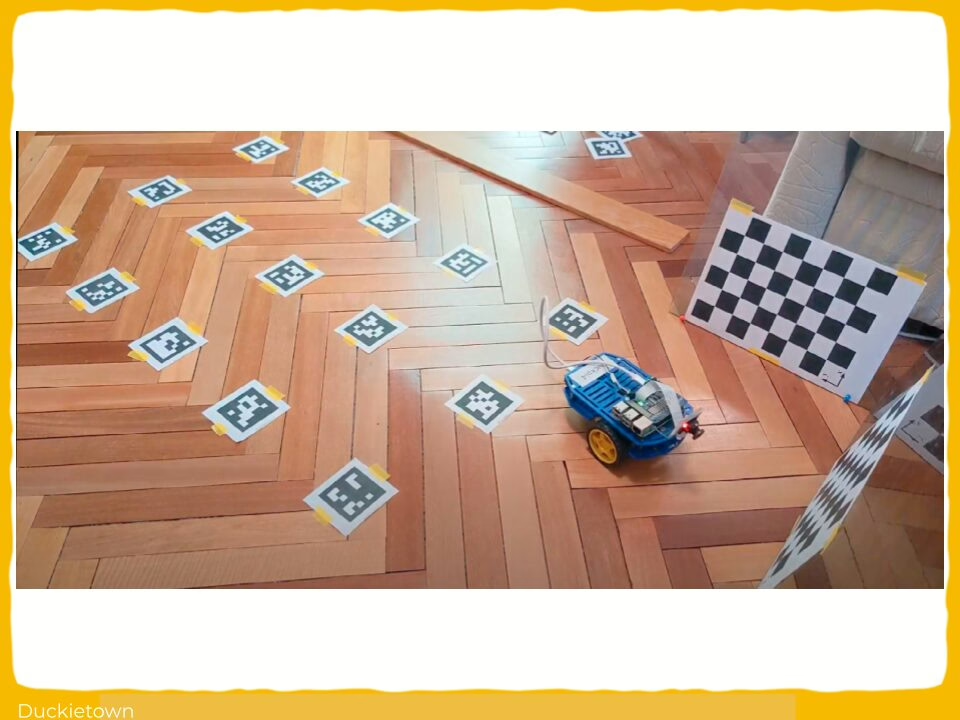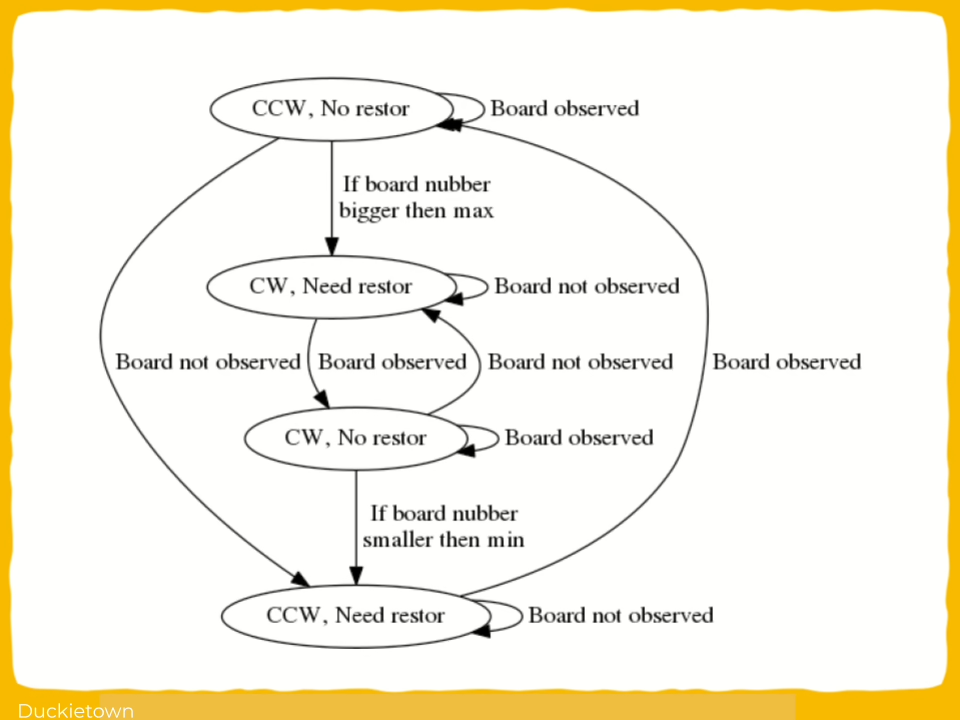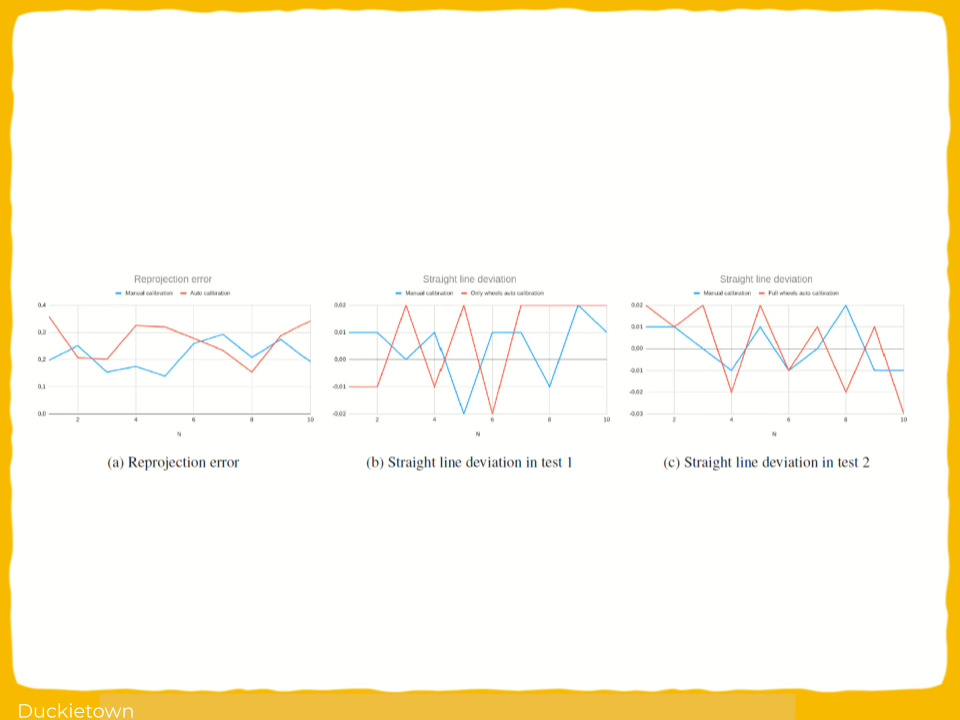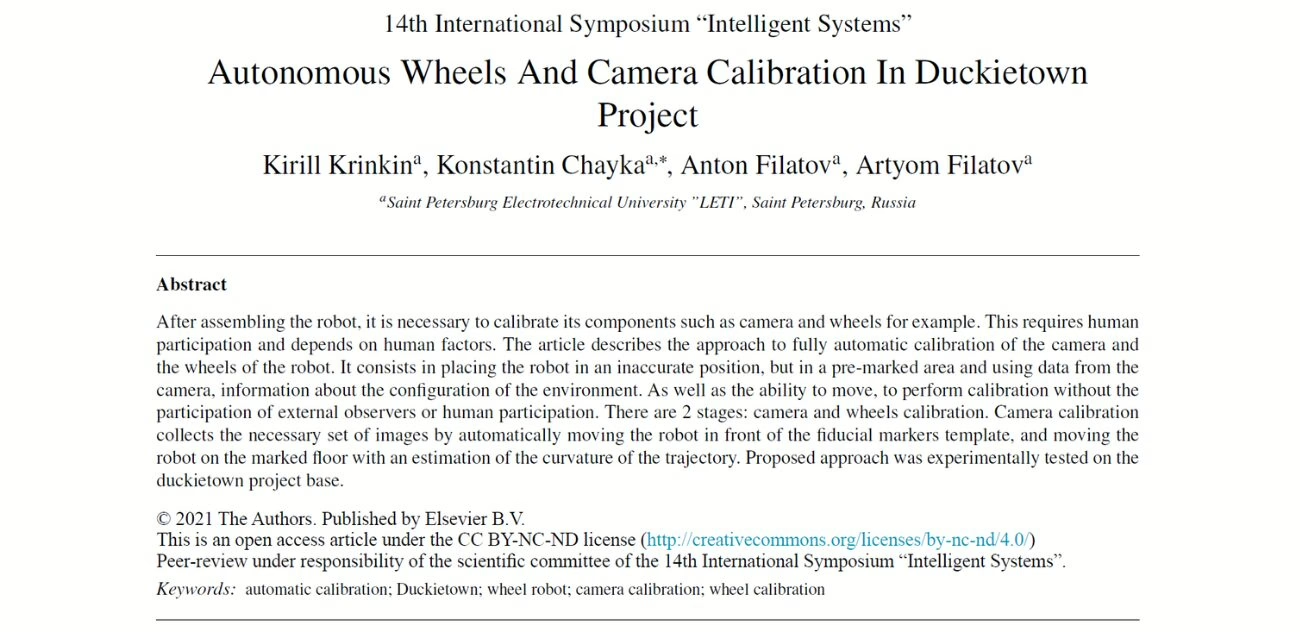General Information
- Title: Autonomous Wheels And Camera Calibration In Duckietown Project
- Authors: Kirill Krinkin, Konstantin Chayka, Anton Filatov, Artyom Filatov
- Institution: Saint Petersburg Electrotechnical University, Russia
- Citation: Krinkin, K., Chayka, K., Filatov, A. and Filatov, A., 2021. Autonomous wheels and camera calibration in duckietown project. Procedia Computer Science, 186, pp.169-176.
Autonomous Calibration – Wheels and Camera in Duckietown
In robotics, accurate calibration of components like cameras and wheels is essential for precise operation. This research is focused on developing an autonomous calibration system for Duckiebots image sensors and odometry.
Traditional calibration methods require manual intervention, often taking time and relying on human accuracy, which can introduce variability. The paper presents a fully autonomous approach to calibration, enabling Duckiebots to perform self-calibration without human guidance. This enables users to calibrate multiple robots simultaneously, maximizing efficiency and reducing downtime.
Fiducial markers (AprilTags) are utilized in pre-marked environments. Although the method showed slightly reduced calibration precision compared to typical alternatives, the process still yields sufficient performance for Duckiebots to navigate autonomously in Duckietown.
Highlights - Autonomous Calibration - Wheels and Camera in Duckietown
Here is a visual tour of the work of the authors. For all the details, check out the full paper.



Abstract
In the author’s words:
After assembling the robot, it is necessary to calibrate its components such as camera and wheels for example. This requires human participation and depends on human factors. The article describes the approach to fully automatic calibration of the camera and the wheels of the robot.
It consists in placing the robot in an inaccurate position, but in a pre-marked area and using data from the camera, information about the configuration of the environment. As well as the ability to move, to perform calibration without the participation of external observers or human participation. There are 2 stages: camera and wheels calibration.
Camera calibration collects the necessary set of images by automatically moving the robot in front of the fiducial markers template, and moving the robot on the marked floor with an estimation of the curvature of the trajectory. Proposed approach was experimentally tested on the duckietown project base.
Conclusion - Autonomous Calibration - Wheels and Camera in Duckietown
Here are the conclusions from the authors of this paper:
“As a result, a solution was developed that allows fully automatic calibration of the camera and robot wheels in the Duckietown project. The main feature is the autonomy of the process, which allows one person to run in parallel the calibration of an arbitrary number of robots and not be blocked during their calibration.
The limitation is the number of physically labeled sites. According to the results of comparing the developed solution with the initial one, a slight deterioration in accuracy can be noted, which is primarily associated with the accuracy of the camera calibration, however, the result obtained is nevertheless sufficient for the initial calibration of the robot and is comparable to manual calibration.
As the planned improvements, which will have to increase the accuracy of the camera calibration, a larger number of chessboards located at different angles and a greater distance of movement used in calibrating the wheels will be used.”
Project Authors
Kirill Krinkin is an Adjunct Professor at Constructor University, Germany.
Konstantin Chaika is an Educational Content Manager, Tutor at JetBrains, Czech Republic.
Anton Filatov is currently affiliated with the Saint Petersburg Electrotechnical University “LETI”, Saint Petersburg, Russia.
Artyom Filatov is currently affiliated with the Saint Petersburg Electrotechnical University “LETI”, Saint Petersburg, Russia.
Learn more
Duckietown is a platform for creating and disseminating robotics and AI learning experiences.
It is modular, customizable and state-of-the-art, and designed to teach, learn, and do research. From exploring the fundamentals of computer science and automation to pushing the boundaries of knowledge, Duckietown evolves with the skills of the user.





